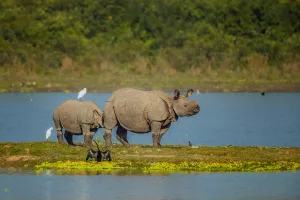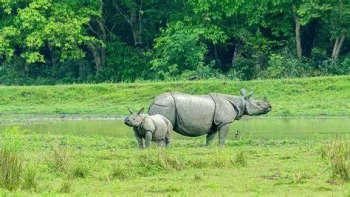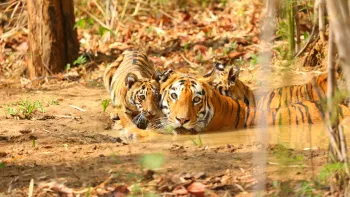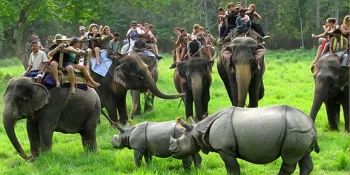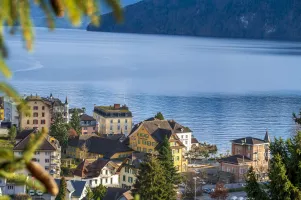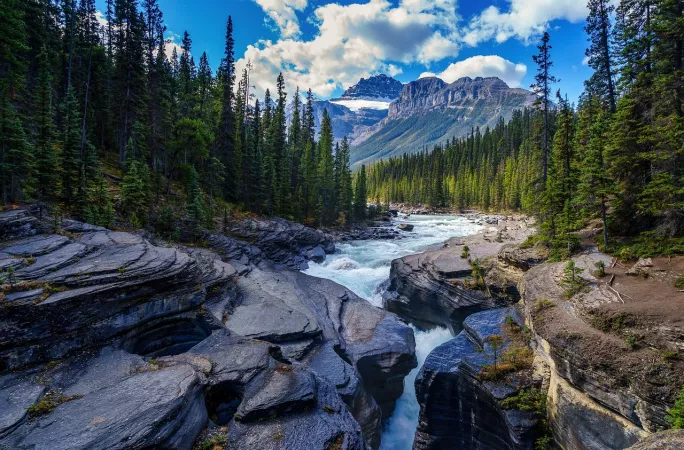
The Great Himalayan National Park
Duration
3 to 7 Days
3 to 7 Days
Best time to visit
Apr-Jun, Sep-Oct
Apr-Jun, Sep-Oct
Theme
Hill Station, Adventure, Wildlife
Hill Station, Adventure, Wildlife
The Great Himalayan National Park Travel Guide
The Great Himalayan National Park, located in the Indian state of Himachal Pradesh, is renowned for its stunning landscapes, diverse wildlife, and rich cultural heritage. Established in 1984, this UNESCO World Heritage Site covers an area of 1,171 square kilometers and is home to rare species like the snow leopard and blue sheep. The park's rugged terrain, snow-capped peaks, and lush forests make it a paradise for nature lovers and adventure enthusiasts alike.Top Attractions in The Great Himalayan National Park
- Great Himalayan National Park Wildlife
- Tirthan Valley
- Sainj Valley
- Rolla
- Chhoie Waterfall
The Great Himalayan National Park is Famous for
Its diverse wildlife and pristine natural beauty.Top Attractions in The Great Himalayan National Park
- Explore the Great Himalayan National Park Wildlife
- Trekking in Tirthan Valley
- Discover the beauty of Sainj Valley
- Camping at Rolla
- Visit the picturesque Chhoie Waterfall
What's Great about Travelling to The Great Himalayan National Park?
- Perfect for nature lovers and wildlife enthusiasts
- Offers unique trekking and camping opportunities
- Experience the rich cultural heritage of the Himalayan region
What's Not So Great about Travelling to The Great Himalayan National Park?
- Remote location with limited amenities
- Challenging terrain may not be suitable for all travelers
- Weather conditions can be unpredictable
Travel Tips for The Great Himalayan National Park
- Obtain necessary permits for entry into the national park
- Prepare for varying weather conditions with appropriate clothing
- Respect the local culture and wildlife during your stay
Important The Great Himalayan National Park trip information
- Ideal Duration: 3-5 days
- Best Time to Visit: April to June and September to November
- Nearby Airports and Railway Stations: The nearest airport is Bhuntar Airport, and the nearest railway station is Joginder Nagar Railway Station
Per Person
24,400
*EXCLUDING APPLICABLE TAXES Per Person
40,000
*EXCLUDING APPLICABLE TAXES Per Person
15,000
*EXCLUDING APPLICABLE TAXES Per Person
18,000
*EXCLUDING APPLICABLE TAXES Per Person
19,000
*EXCLUDING APPLICABLE TAXES 5.0 Ratings
( 8 Reviews )
( 8 Reviews )
Per Person
2,37,500
*EXCLUDING APPLICABLE TAXES 5.0 Ratings
( 20 Reviews )
( 20 Reviews )
FAQ's on The Great Himalayan National Park
Q1: What is the best time to visit The Great Himalayan National Park?
The best time to visit The Great Himalayan National Park is during the months of April to June and September to November. These periods offer pleasant weather for trekking and exploring the park. Avoid the monsoon season from July to August due to heavy rainfall, which can make trails slippery and challenging. Winter months from December to February are cold with snowfall, limiting access to some areas but offering a unique snow-covered landscape for those interested in winter activities.
Q2: Do I need a visa to travel to The Great Himalayan National Park?
Most visitors to The Great Himalayan National Park will require a tourist visa to enter the country. It is recommended to check the specific visa requirements based on your nationality before planning your trip. Some countries may be eligible for visa exemptions or visa-on-arrival facilities. Ensure your passport has a validity of at least six months beyond your intended stay in the country.
Q3: What are the must-visit attractions in The Great Himalayan National Park?
The must-visit attractions in The Great Himalayan National Park include the pristine landscapes of the park itself, offering opportunities for trekking, bird watching, and wildlife photography. Explore the Tirthan Valley, Serolsar Lake, and the picturesque villages of Gushaini and Shoja. Don't miss the chance to spot diverse wildlife such as Himalayan brown bears, snow leopards, and western tragopans in their natural habitat. Engage with the local communities to experience their traditional lifestyle and cultural practices.
Q4: Is The Great Himalayan National Park a safe place to travel?
The Great Himalayan National Park is generally a safe destination for travelers. However, it is advisable to take necessary precautions while trekking or camping in remote areas. Be cautious of altitude sickness, unpredictable weather conditions, and wildlife encounters. It is recommended to hire experienced guides for trekking expeditions and inform local authorities or accommodations about your travel plans. Stay informed about any potential risks and follow safety guidelines provided by park authorities.
Q5: What is the local currency in The Great Himalayan National Park and can I use credit cards?
The local currency in The Great Himalayan National Park is the Indian Rupee (INR). ATMs are available in nearby towns like Kullu and Manali, but it is advisable to carry sufficient cash for remote areas within the park. Credit cards are accepted in some hotels, restaurants, and larger establishments, but it is recommended to carry cash for smaller purchases and local markets. Inform your bank about your travel plans to avoid any issues with card transactions.
Q6: What is the local cuisine like in The Great Himalayan National Park?
The local cuisine in The Great Himalayan National Park offers a blend of traditional Himachali dishes with influences from Tibetan and North Indian cuisines. Some popular dishes to try include siddu, a steamed bread stuffed with vegetables or meat, and dham, a traditional feast served during festivals. Enjoy local delicacies like thukpa (noodle soup), momos (dumplings), and rajma chawal (kidney beans with rice). Vegetarian options are widely available, and the use of spices and herbs adds flavor to the dishes. Be mindful of hygiene standards while dining in local eateries and try out different flavors and specialties of the region.
Q7: What transportation options are available in The Great Himalayan National Park?
Transportation options in The Great Himalayan National Park include buses, taxis, and private vehicles for reaching nearby towns and entry points to the park. Public buses connect major cities like Kullu and Manali to Aut and Banjar, from where you can hire taxis or local jeeps to reach the park entrance. Private taxis are available for hire for more flexibility and convenience in exploring the region. Trekking trails within the park require walking or hiking, and guided tours may include transportation arrangements. Plan your transportation in advance, especially during peak tourist seasons, to ensure smooth travel experiences.
Q8: Are there any cultural norms or etiquette I should be aware of when visiting The Great Himalayan National Park?
When visiting The Great Himalayan National Park, it is important to respect local customs and traditions. Dress modestly, especially when visiting religious sites or interacting with local communities. Remove your shoes before entering temples or homes, and seek permission before taking photographs of people or sacred places. Greet locals with a polite "Namaste" and show appreciation for their hospitality. Avoid public displays of affection and follow designated trekking paths to minimize environmental impact. Try to learn a few basic phrases in the local language, Hindi or Himachali, to communicate with residents. By showing respect for the culture and environment, you can have a more enriching and memorable experience in The Great Himalayan National Park.
Q9: I am a travel agent. How can I buy travel leads of The Great Himalayan National Park?
Register yourself as a travel agent at agents.tripclap.com and then you can buy travel leads to The Great Himalayan National Park once your account is approved. For more details contact our support team at +91-8069186564 or support@tripclap.com
